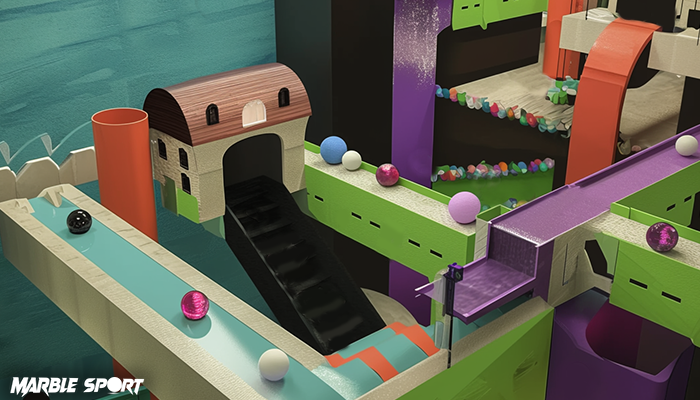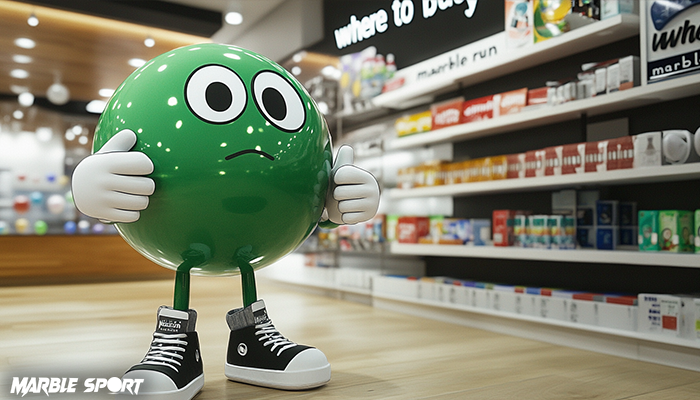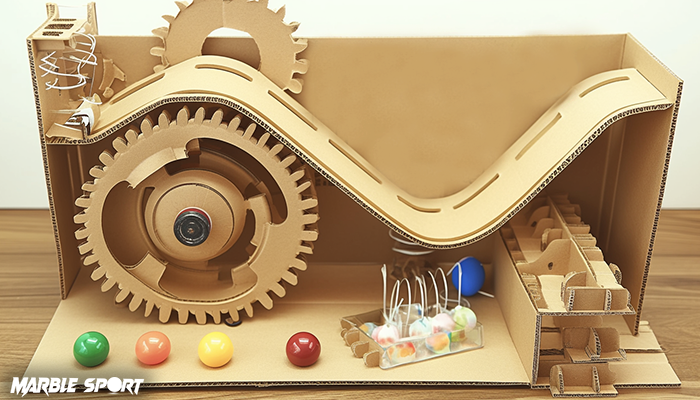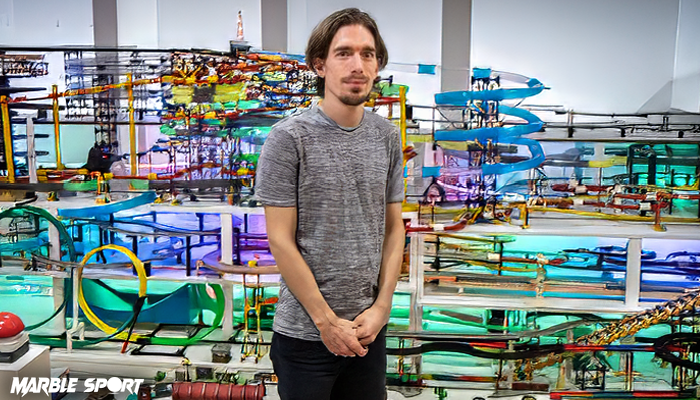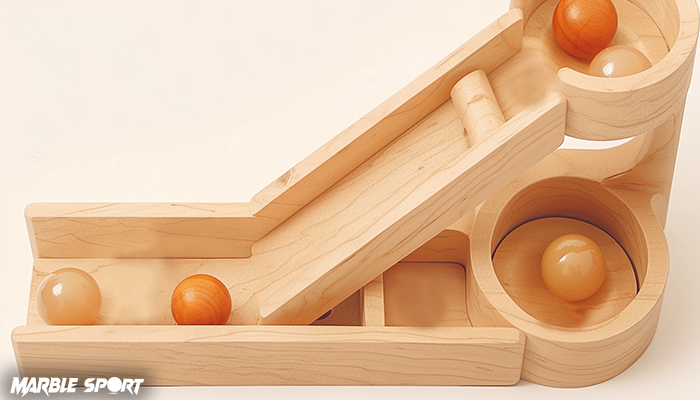What Is a Marble Run and Why It’s So Addictive
A marble run is a track system that allows marbles to roll through using gravity, twists, turns, and obstacles. It was once only a kid’s toy, but it’s now popular with people of all ages, from casual builders to serious racers. Thanks to its limitless design options and weirdly pleasant motion, marble runs have evolved into a creative, engaging, and unexpectedly addictive game.
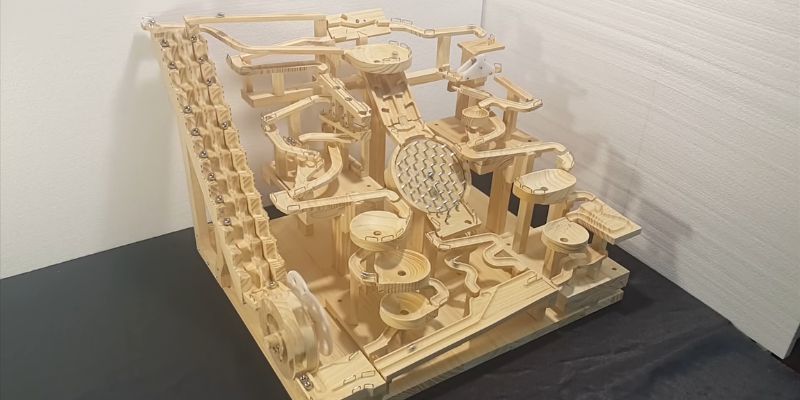
The basics: What is a marble run?
A marble run is a gravity-powered track system designed to transport marbles from a starting location to a finish line. It’s all about velocity and direction and seeing those tiny spheres speed, spin, and occasionally smash their way down ramps, curves, and tunnels.
Most marble runs begin in a higher position—think platforms, slopes, or launch ramps—with gravity doing the heavy work. As the marble falls, it travels a path composed of various track components, which can be as simple as a cardboard tube or as sophisticated as a modular plastic track.
Marble runs are created using plastic kits (such as GraviTrax), wooden blocks, foam boards, and even household materials. DIY enthusiasts enjoy sand-based tracks or cardboard designs, whilst serious racers prefer precision-cut acrylic or wooden systems. Regardless of the substance, the enjoyment comes from watching marbles glide, bounce, or fly from beginning to end.
Core components of a marble run
Every marble run, no matter how big or tiny, is made up of a few key components that keep the action moving and the enjoyment going. Here’s how the magic comes to life:
Starting Point
Here’s where it all starts. Your starting location, whether it’s a basic hand release, a launch ramp, or an electronic gate, determines the tone of the race. Higher beginnings result in faster marbles, more momentum, and increased excitement.
Track Pathways
These guide the marbles from beginning to end. Think about tubes, slopes, zigzag ramps, loops, and spirals. You can create routes that twist randomly or flow like a smooth downhill slide. The layout you select impacts how the marble behaves.
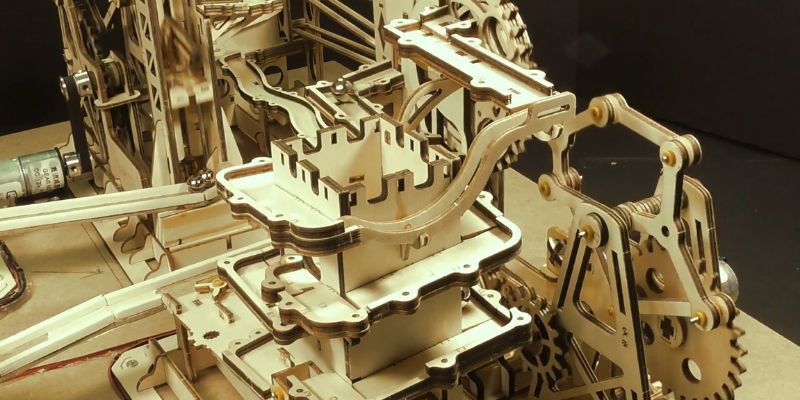
Obstacles & Features
Want more chaos? Include features such as spinning funnels, bouncing pads, trapdoors, seesaws, and jump gaps. These elements add tension, challenge timing, and make each race unexpected in the greatest way.
Finish Line
This could be a basic catcher, a scoring zone, or even a spectacular stop gate. It’s where the winner is determined and the marble’s crazy adventure comes to a gratifying conclusion.
A Brief history of marble runs
The idea of rolling stuff down hills goes back centuries. Early civilizations used spherical stones, clay, and nuts to create primitive “run-like” games long before the term existed. Marbles—made of stone, clay, or glass—have been discovered in ancient Egyptian tombs and Roman ruins.
As marble became more widely available in the twentieth century, children began building their racetracks out of household materials such as books, boards, and furniture. This DIY play gradually evolved into the marble runs we know today: plastic kits with colored paths, modular pieces, and interactive elements.
The past decade brought an unexpected twist—marble runs became a spectator sport. With the rise of YouTube channels like Jelle’s Marble Runs and Marble Magic, competitive marble racing exploded in popularity. These leagues turned simple races into thrilling events with team rivalries, elaborate tracks, commentary, and massive global fan bases. What started as child’s play is now a full-fledged form of entertainment.
Why are marble runs so addictive?
There’s something very captivating about watching marbles race down a track. The way they speed around curves, bounce through funnels, and narrowly dodge obstructions is pure visual delight. Smooth action, vibrant colors, and the sound of marbles clinking along a course? It just hits differently.
Then there’s the building portion. You can start simply or get wild with loops, jumps, split pathways, and towering spirals. The ability to redecorate whenever you want keeps things fresh. It’s LEGO meets engineering with a dash of anarchy.
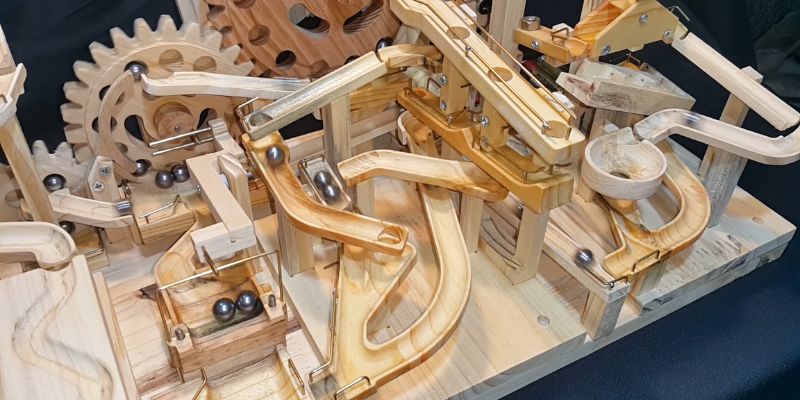
And don’t overlook the bodily enjoyment. In a screen-dominated society, marble runs restore the thrill of hands-on play. You are not simply observing; you are experimenting, tweaking, and creating. It’s fulfilling in ways that computer games cannot replicate.
Best of all? No two races are ever the same. A slight shift in a ramp, a nudge from another marble—every run delivers a new surprise. Add a bit of strategy, throw in some competition, and suddenly you’re spending hours perfecting your track. It’s play, but with purpose—and that’s what makes it irresistible.
The appeal across all ages
Marble runs aren’t just for kids; people of all ages enjoy them. They pique children’s interest, foster problem-solving skills, and make physics enjoyable. Teenagers enjoy the creative flexibility and challenge of producing music that works and impresses. Adults? Many people find marble runs surprisingly relaxing, pleasant to create, and extremely enjoyable to race.
They are also a great family pastime. Parents and children may build together, race together, and laugh at the chaotic, unpredictable finishes. Teachers use marble runs in the classroom to teach hands-on STEM subjects such as gravity, friction, angles, and speed, all wrapped up in an entertaining activity.
Then there’s the online world. Marble Racing has a devoted, passionate following, thanks to DIY producers and popular YouTube channels like Marble Magic and Jelle. Hobbyists create complex tracks, name their marbles, and even organize contests. What began as a simple toy has developed into a widespread craze among everyone from babies to adults.
Types of marble runs to try
When it comes to marble runs, one size does not fit all. The type you choose is determined by your objectives—simple pleasure, creative building, or serious competitiveness. These are the most popular choices:
Commercial Sets
Commercial marble run sets are ideal for those seeking both convenience and polish. GraviTrax, for example, offers sleek, modular designs that are powered by magnets and gravity. Marble Genius is ideal for family-friendly installations, with bright, colorful pieces that snap together quickly. Hape Quadrilla combines wood quality with spiral-friendly shapes, making it both instructive and visually appealing.
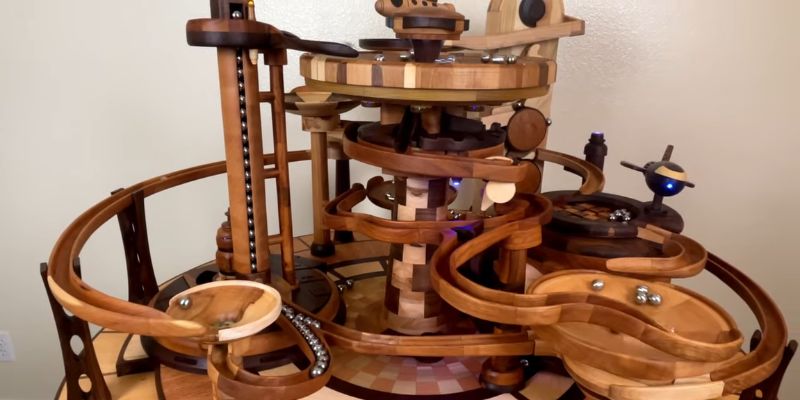
DIY Tracks
Prefer hands-on creativity? DIY marble runs can be built from scratch using cardboard tubes, wooden planks, sand, straws, and whatever else you have lying around the house. They’re inexpensive and completely customizable—perfect for classrooms, creative projects, or wild weekend builds with the kids.
Pro-Level Racing Tracks
For serious racers, pro-level tracks like those featured in Marble Magic provide the thrill of high-speed competition. These configurations include motorized lifts, obstacle-filled layouts, cinematic themes, and precision-built elements to ensure consistent, thrilling racing. Ideal for content creators and adult aficionados seeking a next-level thrill.
Marble run as a STEM learning tool
Marble runs are not only enjoyable; they also provide excellent opportunities for hands-on STEM learning. They are fundamentally a fun method to learn about physics, engineering, and problem solving.
Physics in Action
Each twist, plunge, and curve on a marble run teaches real-world physics concepts. Children learn how gravity drags the marble down the track, friction slows it on various surfaces, and momentum propels it via ramps and leaps. These concepts emerge without the aid of a textbook.
Engineering & Design Thinking
Creating a successful marble run needs trial & error. Both children and adults develop engineering reasoning by altering angles, testing support structures, and revising layouts to optimize performance. It’s all about problem-solving and creativity—two characteristics of excellent design thinking.
Perfect for Learning Environments
Marble runs add enthusiasm and engagement to classrooms, homeschool activities, and makerspaces alike. They are ideal for group cooperation, independent projects, and themed challenges. Furthermore, they are screen-free and infinitely adjustable, making STEM topics enjoyable, memorable, and unexpectedly addictive.
Getting started with your marble run
Building your first marble run is simpler than you would think – and a lot more enjoyable than you expect. All you need are some marbles, simple track sections, and a little of imagination.
Begin with basis slopes or ramps made from items you already have, such as cardboard tubes, books, or wooden planks. Once you’ve got the hang of it, consider adding obstacles like funnels, spinners, and loops. Want to go even further? Choosing a theme, space, jungles, or cityscape, and bringing it to life with props and decorations.
Commercial kits such as GraviTrax and Marble Genius provide ready-to-build parts with numerous expansion options. If you want to make things yourself, there are numerous guides on YouTube and Reddit to help you get started. You may even join online marble run communities to share designs, show off your course, and participate in exciting competitions.
FAQ
What is the purpose of a marble run?
It’s designed for fun, creativity, learning physics, and even competitive racing.
How does a marble run work?
Marbles start at a high point and roll down a path using gravity, navigating curves, drops, and obstacles along the way.
How many marbles are used in a marble run?
It depends on the design, but most runs use 1–10 marbles per race.
What are marble runs made of?
They can be made from plastic, wood, cardboard, foam, or sand—depending on whether it’s DIY or a commercial set.

